Is summer going to start to fade away? Then it’s time to prepare your pool for the cooler months. After the summer joviality, it’s vital to winterize your pool before the cold spell. However, to live somewhere with mild winter is no less than a fortune. If you’re situated somewhere where temperatures drop to near or below freezing, then the closure of the pool saves it from winter’s ravages and keeps it in great working order. Also, hunting for debris in the blizzard is less rewarding for unused pools. Leaving your pool uncovered invites trouble by itself.
But winterizing your pool minimizes the risk to sensitive components. So, it’ll save you from frustration, money, and time. Now the question is how to winterize a pool. This guide will help you to learn to winterize above-ground and in-ground pools.
When to Winterize Your Pool
It would be best to winterize your pool too early, believe it or not. It may seem negligible, but waiting until temperatures consistently fall below 60 to 65 degrees Fahrenheit in your area is essential. Algae are more likely to grow in warmer temperatures, so this will reduce the likelihood of your pool being overtaken by algae.
Due to freezing temperatures, you can damage your pool equipment more quickly, so start winterizing your pool before the temperature drops. In most cases, if you wait longer and your temperature is 10 degree Celsius, the likelihood of problems occurring will be significantly reduced. The growth of algae does not cease until the temperature reaches 4 degrees Celsius. Furthermore, many people neglect maintenance over the winter.
Tools and Materials Needed for Pool Closure
Before pool winterizing, you need to gather essential tools and equipment. These include:
● Adjustable Pliers or wrench
● Winterizing chemical kit
● Bucket
● Plugs for return jets
● Gizzmo or skimmer guard
● Return Line Plugs
● Expansion Plugs
Note: You can find these tools at any local shop in your area or VEVOR.
8 Steps To Winterize an In-Ground Pool
In the pool industry, ending and beginning seasons are hectic, typically for technicians, and you can’t wait too long for a technician to book an appointment. For this, your pool health can suffer if you cannot hire a professional one, so you should learn how to close an in-ground pool for winter.
Here we share some essential steps to winterize your pool before you harm your expensive equipment and pool in colder temperatures.
1-Time to Remove Pool Accessories
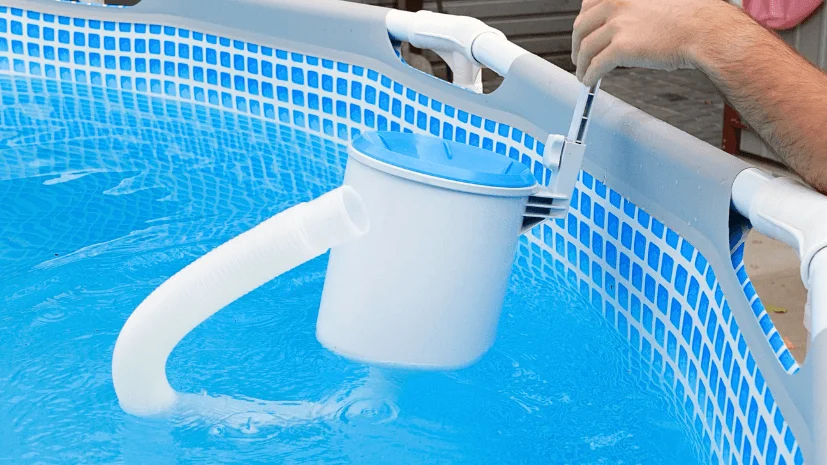
Firstly, remove accessories such as cleaners, ladders, skimmer baskets, and solar blankets from the pool. Remove all dirt and algae by rinsing the items with water, letting them dry, and storing them safely until you reopen the pool for the next cold wave.
2- Deep Cleaning of the Pool
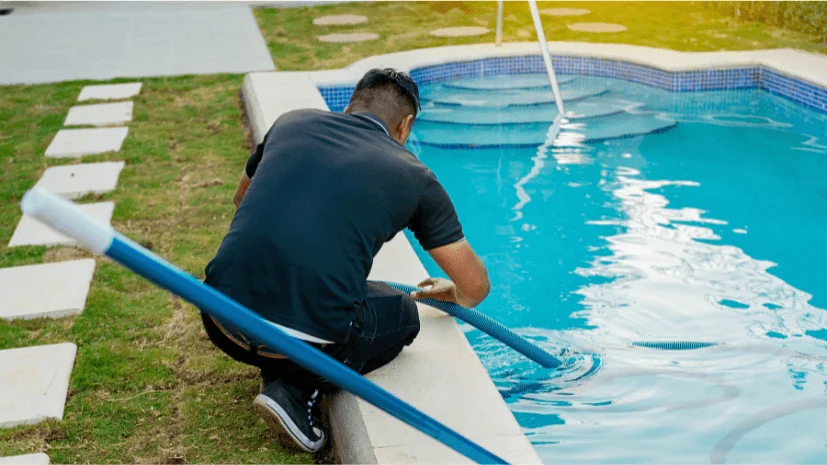
Remove all the debris, slit, and clean your pool. This’s the best way to prevent your pool from mold and algae growth, but also easier to balance the water’s pH level. You’ll require skim nets to clean the pool’s surface and help you remove all debris from the bottom level. After this, brush the sides and pool floor.
Make sure to cover your pool during the winterizing process so it’ll not get dirt again.
3-Balance and Test the Water Chemistry
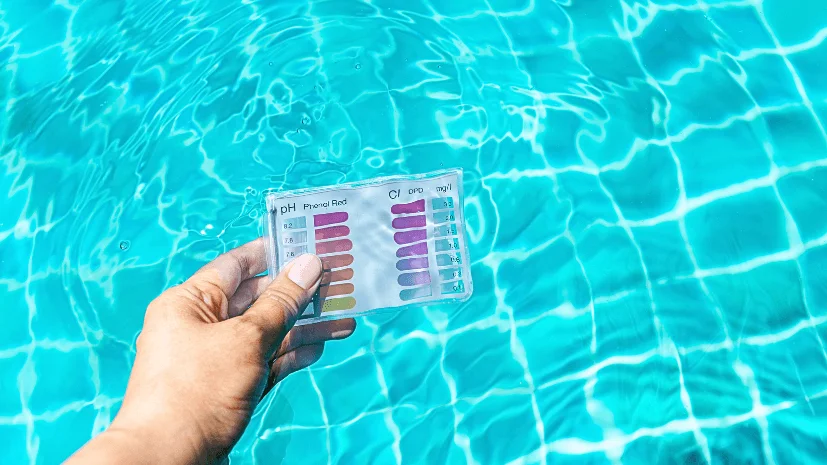
Before closing the pool, test the water chemistry to make the alkalinity level between 80 and 150 parts per million; the calcium level should be 175 to 225ppm, the pH level can be between 7.2 to 7.6, respectively, the chlorine level can be between 1ppm to 3ppm.
Before working on the pH level sure to adjust the alkalinity; ensure that you measure each of these levels on the higher side since the levels will naturally decrease over time.
4-Lowering the Water Level
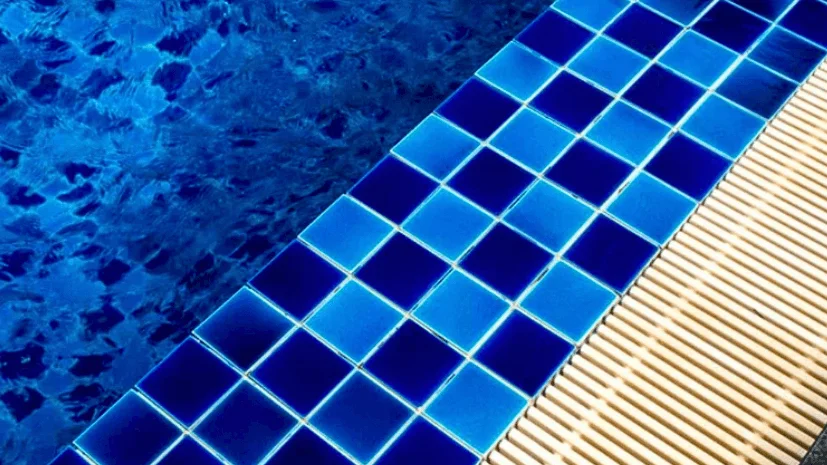
You’ll need to lower the pool’s water level before closing it up if you’re living in an area where you experience a freezing winter and not using a skimmer.
In the case of a mesh cover, the water level should be approximately a foot below the skimmer, and in the case of a solid cover, the water level should be roughly half a foot below the skimmer. All this depends on how you remove the water from the pool; this process can take two or more days.
5-Add Algaecide and Shock
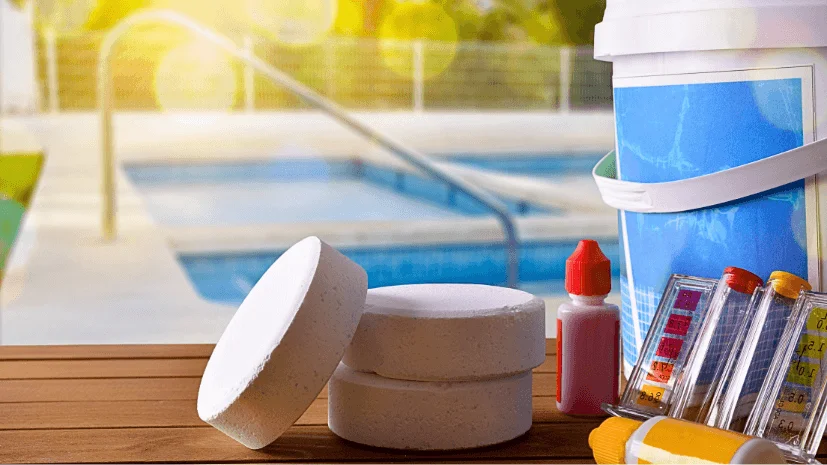
You must add algaecide and pool shock to prevent bacteria and algae growth. Before adding these products, read the instructions or ask the manufacturer how long it takes in pool wintering. Keep in mind that you can’t add some products at the same time, such as chlorine shock and algaecide. Run the pump for several hours to circulate each product after adding them.
6-Draining and Storing the Equipment
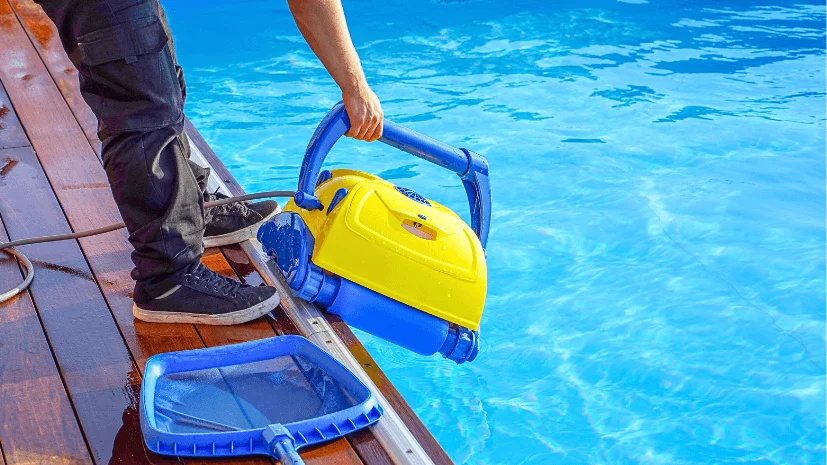
Drain all the equipment to not to expand the water to cause damage when the temperature falls below zero—Use a blower to clear the water from the pool lines and then plug them up with expansion plugs. If you’re cautious about bursting pipes, then consider adding pool antifreeze.
Drain every heater, pump, and filter, as most of this equipment has drain plugs. Additionally, remove all the filters and clean them. After this store, if possible, pump and filter indoors for the next sunny days.
7-Blow Out Lines

For wintering the pool, beginning with the pump return lines, attach a conical hose connector to a blower or shop vac and blow out the return lines.
Plug all the lines once the water quantity is substantial using a rubber expansion or threaded plug. Repeat this process a few times with a skimmer line and skimmer to prevent water from entering the line during cold weather; insert a skimmer plug.
8-Cover the Pool
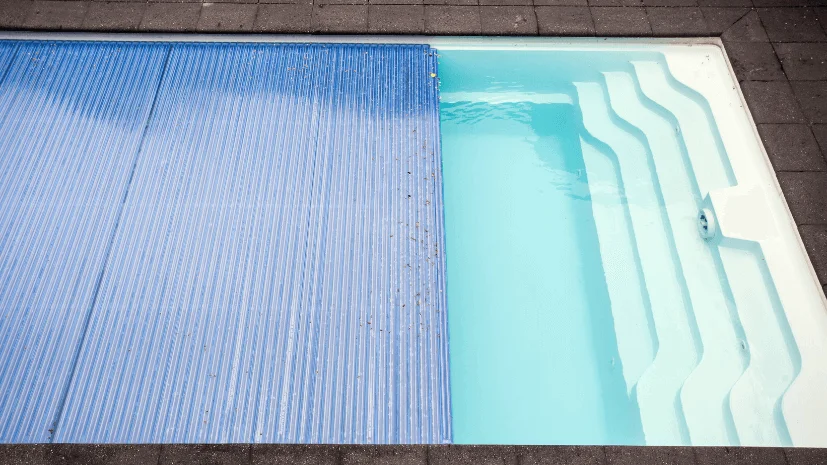
Now it’s time for a pool closure. Let’s put the cover on the pool. Two types of pool covers are available in the market: safety and winter cover. Safety covers protect from debris and protect your pets from accidentally falling into it. In contrast, winter covers offer less protection than them, and you don’t have to take extra precautions to secure them.
Last, but not least, it’s up to you which type of cover you’re using. Please ensure they’re tight-fitting and don’t have tears or holes.
How To Winterize an Above-Ground Pool
All the above steps are required to winterize an above-ground pool except draining and storing the equipment. A good idea before covering an above-ground pool is to install an air pillow at its center (to keep it in place) to reduce the expansion of ice and avoid the snow that accumulates on the cover from exerting too much pressure.
It’s also recommended to follow these tips to winterize the above-ground pool:
● Always use a pool cover size for the pool shape; don’t use a tarp as a pool cover.
● Use a leaf net on the top of the pool as a cover if your pool has many deciduous trees above it.
● Remember to include air pillows for the cover. If the cover freezes, these mechanisms will release it from the water.
● Lastly, you must lift the cover every couple of weeks to ensure algae is not kept in the pool. Don’t forget to add algaecide if algae start to grow.
FAQs About Pool Winterization
1. How often should I check the pool cover during winter?
It depends on your pool size, but we suggest you run the pump for at least 4 to 6 hours/ day during the colder temperature. You can divide the daily cycle into several cycles, but each cycle should equal 4 hours to pass all the water through the filter.
2. How do I protect pool equipment and accessories during winter?
If you want to remove debris and dirt from every piece of equipment, we suggest killing the power to ensure it doesn’t come back when you are on it again. Lastly, cover your equipment with blankets and traps.
3. How do I prevent the pool’s plumbing from freezing in winter?
During the colder months, it’s recommended to cover the pool equipment with cover to make your pipes and equipment warm. But don’t worry if you don’t have a cover for your equipment. Just use a towel to wrap equipment pipes to protect plumbing lines from freezing. Believe it or not, you can use pool noodles to provide good insulation to pipes.
4. Can I leave the pool open during the winter if I live in a mild climate?
Yes, you can leave the pool open until and unless the temperature doesn’t drop below zero or you only get a mild winter in the place where you live, but If you live in a city like Chicago or Newyork, then you need to cover your pool during the winter months.
Final Words
Pool winterization is not a rush process, so remember it during pool closure. Allow the chemical to sit down properly and start working. Also, make sure to remove all the water from lines and equipment. If you’re failing to properly shock and algae treatment, you’re inviting bacteria by yourself to take over your pool. Furthermore, using improper chemicals can cause hardness and build up calcium on the pool surface. The best way to protect your investment is to get a job done properly or Visit a VEVOR to get the best equipment and pool covers for your pool.

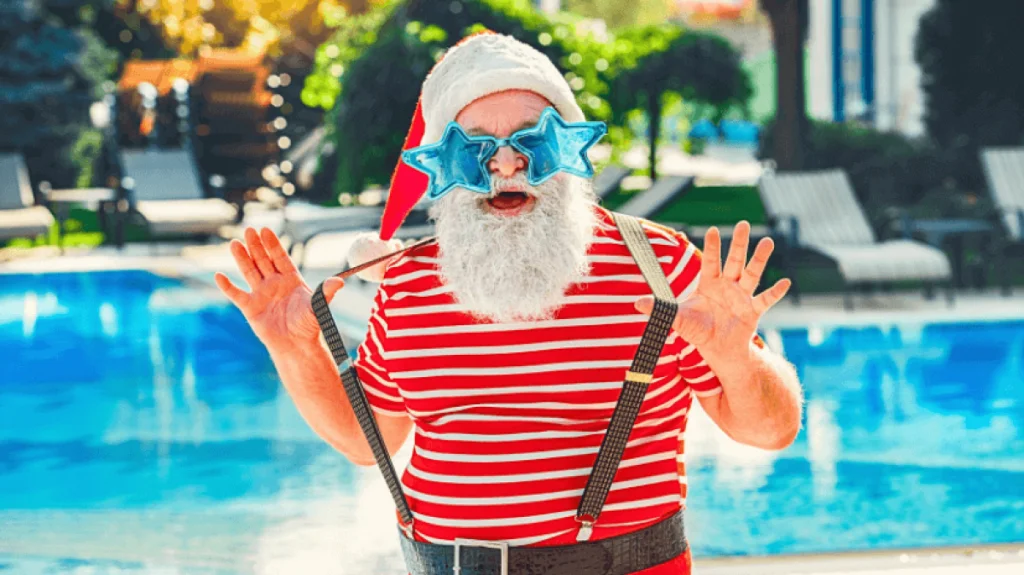
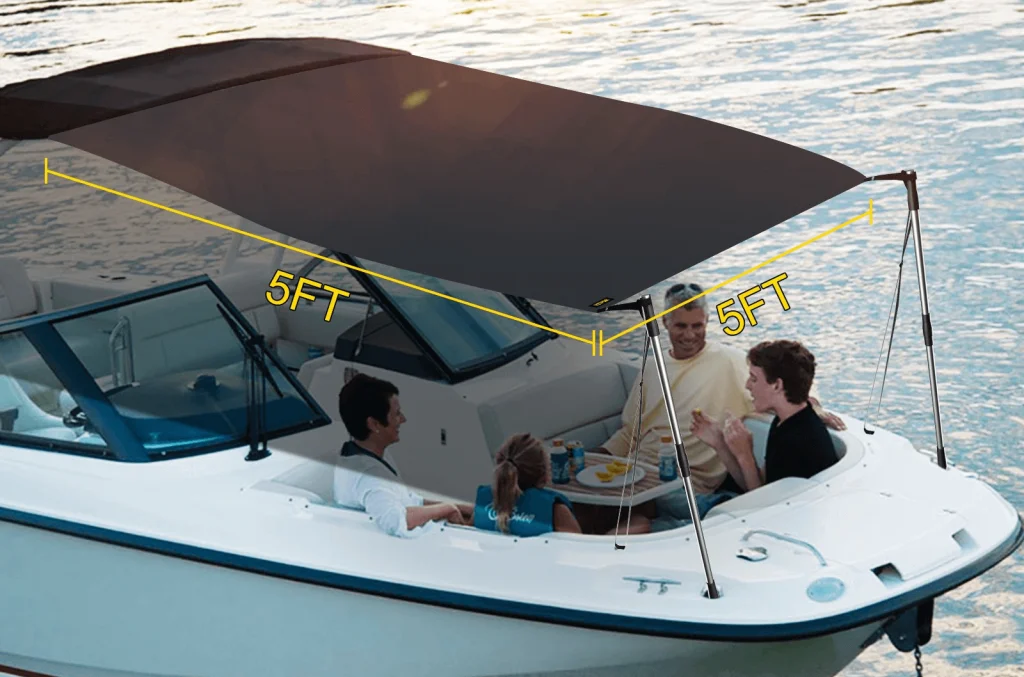

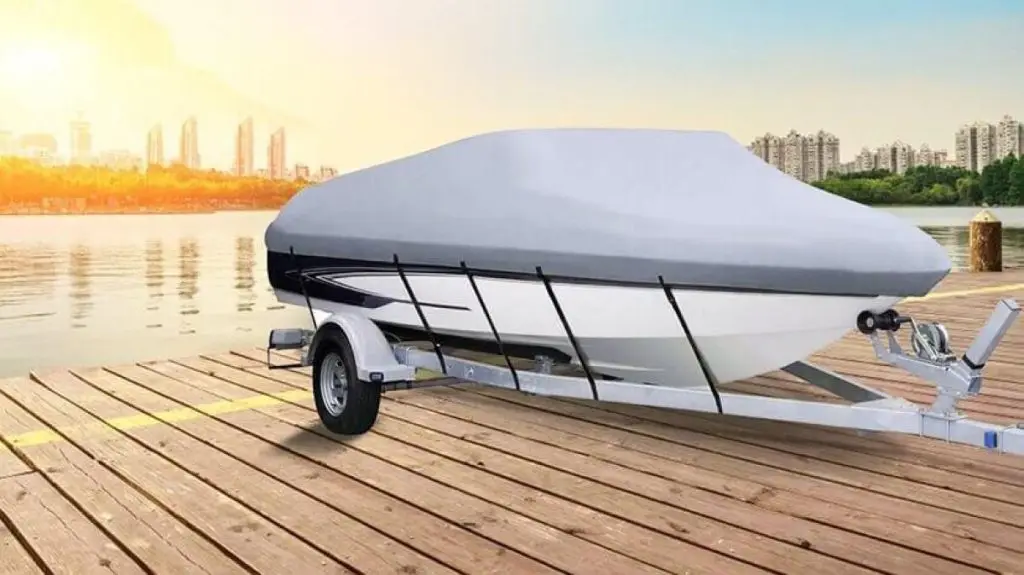
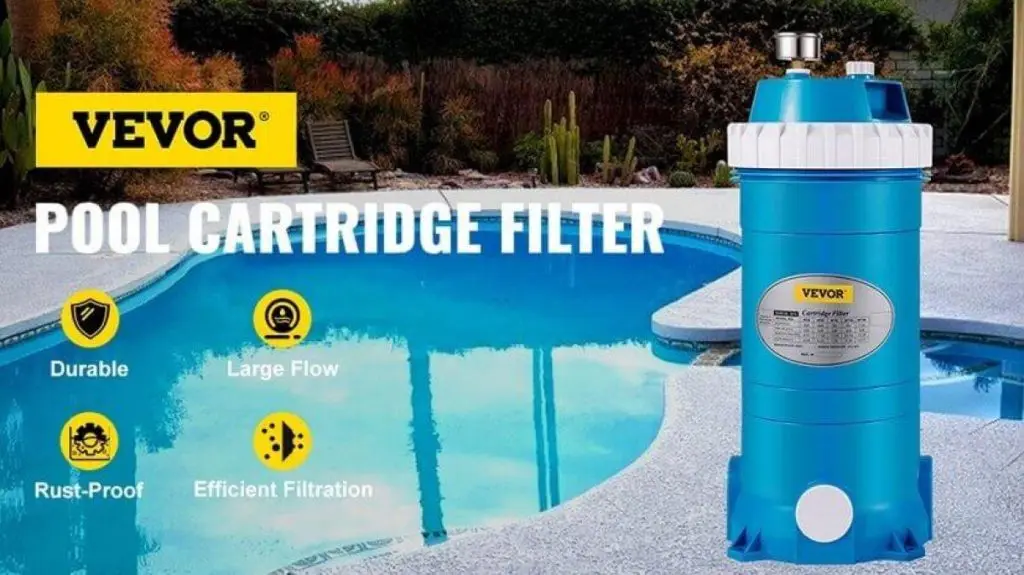
Can I use a 1 1/2 hp motor with a sand filter that had a one hp motor
Yes, you can use a 1 1/2 HP motor with a sand filter that originally had a 1 HP motor, but it’s important to ensure compatibility. The increased horsepower can offer more power for water circulation and potentially improve filter performance. However, check the filter’s specifications to ensure it can handle the increased flow rate without damage.